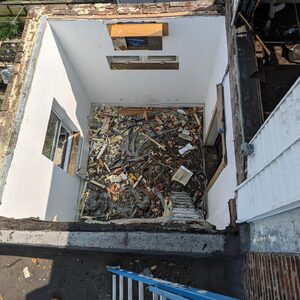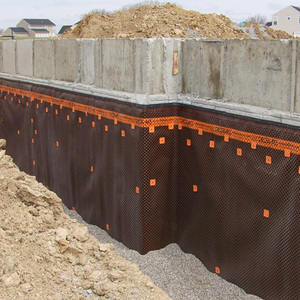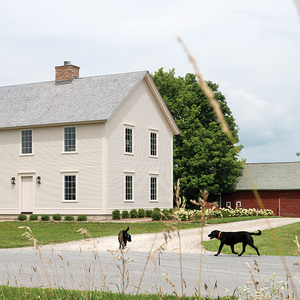Discussion Forum
Discussion Forum
Up Next
Video Shorts
Featured Story

Discover a concrete-free foundation option that doesn't require any digging.
Featured Video
How to Install Exterior Window TrimHighlights
"I have learned so much thanks to the searchable articles on the FHB website. I can confidently say that I expect to be a life-long subscriber." - M.K.
Fine Homebuilding Magazine
- Home Group
- Antique Trader
- Arts & Crafts Homes
- Bank Note Reporter
- Cabin Life
- Cuisine at Home
- Fine Gardening
- Fine Woodworking
- Green Building Advisor
- Garden Gate
- Horticulture
- Keep Craft Alive
- Log Home Living
- Military Trader/Vehicles
- Numismatic News
- Numismaster
- Old Cars Weekly
- Old House Journal
- Period Homes
- Popular Woodworking
- Script
- ShopNotes
- Sports Collectors Digest
- Threads
- Timber Home Living
- Traditional Building
- Woodsmith
- World Coin News
- Writer's Digest


















Replies
Can someone please offer me an explanation for this!
Hi Ed.....sorry, no explanation but for future, any time I open any can I keep one hand snug over the lid and slowly twist pry it open working my way around the lid....almost like you'd do opening a 2 liter soft drink after you just dropped it. Also with "old" shellac it's a good idea to test it on scrap prior to use.
My only "guess" is the thinner was still in a fermenting process when manufactured and the shellac bugs suck up sap just prior to death by gorging so maybe the thinner was not deactivated and the shellac material had enough tree sap/sugar to kick the pricess back up and load the can with pressure.
Premixed Shellac has such a short shelf life that I make my own from flakes as needed.
frenchy eats, lives and breathes shellac....maybe he'll come along and venture a guess.
View Image
Thanks but I'm equally at a loss as to the cause..
Incidently if you purchase Zinssler's premixed shellac it's good for several years before it starts to cause problems.. (they have a new formula, in the past I would never take a can more than 9 months old since it's maximum life was 12 months..)
It's also massively less expensive than buying flakes and mixing your own..
I still over thin all my shellac since I've never had an issue with overly thinned shellac and it helps me prevent runs and other errors..
By the way it's not bugs that are in the can it's bug excrement on a stick that is scrapped off and compressed into bricks.. I've found shellac flakes to be as sensitive to age problem as premixed shellac..
By the way it's not bugs that are in the can it's bug excrement on a stick that is scrapped off and compressed into bricks..
Hi frenchy....yeah I didn't do too good of a job 'splaining that did I? <grin>
I've found shellac flakes to be as sensitive to age problem as premixed shellac..
I take mine in the original packaging and store them inside of a big zip lock bag along with a couple of desiccant packs and put them in a dark dry cabinet, main shelf in a temp controlled area and so far they've remained perfect a little better than 2 years.
I package most things this way if I know it'll be a while between uses....never left in a garage or shop unless it highly volatile stuff.
Hey...what projects are you focused on these days.....I know you medically have to pace yourself, but didn't know if you were on to something new.
View Image
Even more info on the stuff.http://en.wikipedia.org/wiki/Shellac
Doin' the interior finishing stuff. It's really slow going since I'm often working with boards more than 18 feet long. To deal with them I have to set up infeed rollars, outfeed rollers and my long fence. ( a Piece of 4x4 inch aluminum angle 20 feet long).
On top of that I go into the shop to mill a piece and then upstairs to trail fit it.. then back down into the shop to do the final trimming etc.. and back upstairs to the third floor to install it..
Once the interior is done (or acceptably further along) I will assemble my MGuar. (A 1950 MGTD with Jaguar XKE suspension and a Jaguar V12 engine) The wheels are nearly one off's from the first Chapperal sports car made by Troutman and Barnes. They are pin drive real magnesium knock offs and even though they are relatively big they are incredibly light compared to most wheels..
I'm hoping that even with the V12 engine I'll have the weight around 1500# and with the 500HP I can get with a V12 it should prove to be, A real British hotrod!
"By the way it's not bugs that are in the can it's bug excrement on a stick"Sounds like you are saying that it was not so much an explosion, as it was thousands of synchronized bug fahrts that caused the problem, eh?
Welcome to the Taunton University of Knowledge FHB Campus at Breaktime. where ... Excellence is its own reward!
PHEW!!!!
Grin!
It was all the pent up angry from no one from the BT staff ever answering questions on BT.http://www.tvwsolar.com
We'll have a kid
Or maybe we'll rent one
He's got to be straight
We don't want a bent one
He'll drink his baby brew
From a big brass cup
Someday he may be president
If things loosen up
.......... give the manufacturer a call and tell 'em what happened. They may have an anwser and maybe another can of shellac for your troubles.
"There can be no doubt that Socialism is inseparably interwoven with totalitarianism and the abject worship of the state…Socialism is in its essence an attack not only on British enterprise, but upon the right of ordinary men and women to breathe freely without having a harsh, clammy, clumsy tyrannical hand clasped across their mouth and nostrils" -Winston Churchill
"maybe another can of shellac for your troubles."Esp when they hear he is the editor of FHB
Welcome to the Taunton University of Knowledge FHB Campus at Breaktime. where ... Excellence is its own reward!
I had a similar thing happen with a can of "Sculpmetal" (sort of like Bondo). I think it was just the solvent vapors that "came out of solution" while the can was in storage. It was almost a detonation though, but don't think anything made a spark to set it off.
Shellac does react with the metal in the can--I think shellac is slightly acidic. Could be the reaction of acid and metal (hydrogen gas?) plus the solvent (alcohol) vapors created enough pressure to blow the top off.
I gues I'm just lucky this way, but I also had a plasic bottle of shampoo do a similar thing when I opened it--I think that time some ingredient had fermented and made carbon dioxide, but it didn't smell bad or anything.
Danno.
Shellac isn't acidic. It's a base.. what you might be thinking of is the alcohol that premixed shellac has in it will absorb moisture from the air and that moisture could attack the inside. However that would mean that someone opened the can previously and left it open long enough to absorb a great deal of moist air..
Hi all I sometimes post on knots, first time here. I am a hobby ww and have used premixed shellac once. My question-- could the shelf life of the flakes be extended by freezing? Treat me gently I am totally ignorant about this finish--thanks to all.If everyone was a lot fatter, we would all be closer together!
Hi Marvin:Yes. But make sure they're wrapped/sealed up to keep them dry. For most hand finishing, it's nice to dissolve them in a mix of methanol, ethanol (denat. alcohol) and isopropanol (anhydrous!). You can find all three at decent hardware store. I keep the isopropanol at about 5%. Dewaxed shellac can take a long time to dissolve. -tAs for the exploding shellac can, I can check out some cans later tonight, but I seem to recall that spray shellac includes a lighter propellant gas. The brown color sounds like oxidation - probably rust. My off the cuff answer is that the shellac reacted with the alcohol to form esters (this starts happening from the point at which it is prepared) which then decomposed. The shellac esters settled to the bottom of the can, while the propellant segregated up top. Agitate it too much and the plastic lid pops up, the propellant launches out, followed by a spray of decomposed shellac + shellac esters. Supporting evidence might be found if the brown shellac failed to cure hard.Just a guess - I'll look at a can tomorrow and see if there's any better scenarios.-t
I wonder if the solvents react with the steel, yielding an oxygen to the steel and producing a new, more volatile chemical?
A strong nation, like a strong person, can afford to be gentle, firm, thoughtful, and restrained. It can afford to extend a helping hand to others. It's a weak nation, like a weak person, that must behave with bluster and boasting and rashness and other signs of insecurity. --Jimmy Carter
I haven't the foggiest idea. I just popped the can open (carefully) to check the lining, this time I was rather careful and opened her up pretty slowly. There was a definite hiss of gas releasing the moment I cracked the lid so, whatever gas is being produced in there, it's still being produced. I'll be exchanging it today but, I'll also be sending a note to the manufacturer. Who knows, perhaps there is a perfectly sensible explanation for this.
Cheers,
Ed
"I wonder if the solvents react with the steel" A really good question. Chlorinated solvents can react quite violently with aluminum. I remember our machinist used to use trichloroethylene as a lubricant while tapping holes in aluminum; he wondered why all the fizzy things went on as he ran the tap. Alcohol is the solvent for shellac. It is not too reactive, but if it has water in it, the water could react with the metal of the can, again especially if it is aluminum. Steel--possibly. The brown color: Could be contamination, but shellac does have a natural brown color. Air could have gotten in (and water?) and darkened the shellac. (But where is Frenchy for the shellac answers?)
I've had this problem with Guardsmen Lacquer . I believe made by Lilly Company. One of my favorites, but since the new VOC's, cans are unstable, not any more.
I thought it was the acetone, but maybe there is alcohol in it too.Never had a problem, when it was laquer thinner.